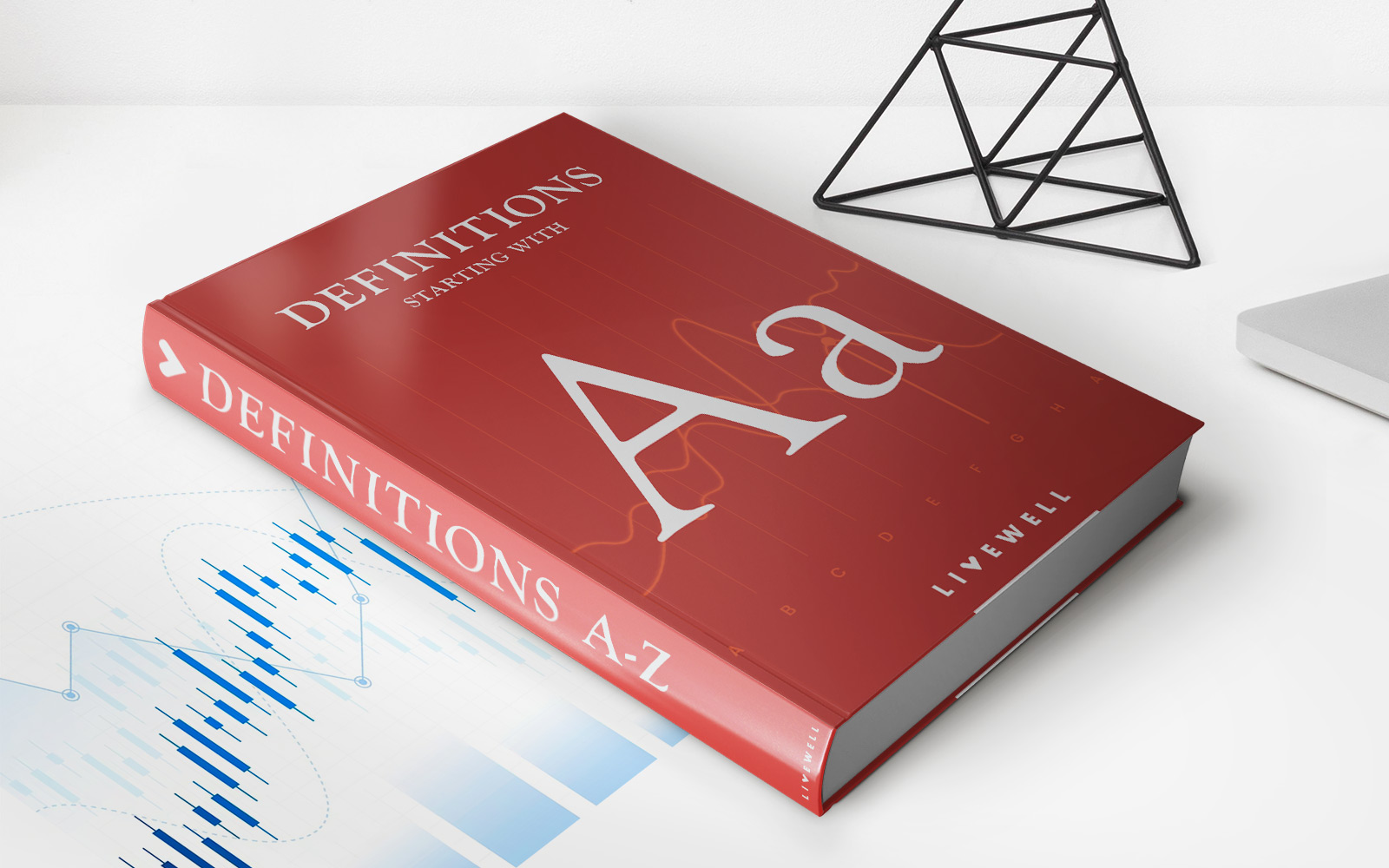

Finance
How Do DSCR Loans Work?
Published: February 17, 2024
Learn how DSCR loans function and their impact on your finances. Understand the workings of DSCR loans and make informed financial decisions.
(Many of the links in this article redirect to a specific reviewed product. Your purchase of these products through affiliate links helps to generate commission for LiveWell, at no extra cost. Learn more)
Table of Contents
Introduction
Welcome to the world of finance, where the intricate web of loans, investments, and financial instruments can often seem overwhelming. In this article, we'll delve into the realm of Debt Service Coverage Ratio (DSCR) loans, shedding light on their inner workings, advantages, and potential drawbacks. Whether you're a seasoned investor or a budding entrepreneur seeking financial insight, understanding DSCR loans can be invaluable in navigating the complex landscape of business financing.
At its core, the concept of DSCR loans revolves around the fundamental principle of evaluating a borrower's ability to service their debt. This critical assessment plays a pivotal role in the decision-making process for lenders, offering a comprehensive perspective on the borrower's financial capacity and the potential risks associated with extending a loan. By exploring the intricacies of DSCR loans, we aim to demystify this essential financial tool, empowering you to make informed decisions and navigate the dynamic terrain of commercial lending with confidence.
Throughout this article, we'll unravel the mechanics of DSCR loans, exploring their various forms, advantages, and potential pitfalls. From understanding the underlying formula to discerning the nuanced implications for borrowers and lenders alike, we'll embark on a comprehensive journey to decode the essence of DSCR loans. So, fasten your seatbelts as we embark on this enlightening expedition into the world of DSCR loans, where financial prudence meets strategic decision-making.
What is a DSCR Loan?
A Debt Service Coverage Ratio (DSCR) loan is a financial metric used by lenders to assess a borrower’s ability to generate enough income to cover their debt obligations. In essence, it serves as a yardstick for evaluating whether a borrower has the financial capacity to repay a loan. The DSCR is calculated by dividing the net operating income (NOI) by the total debt service, which includes both principal and interest payments. This ratio provides lenders with a clear indication of the borrower’s ability to meet their debt obligations and is a crucial factor in the loan approval process.
For lenders, the DSCR is a vital risk assessment tool, offering insights into the financial health and stability of potential borrowers. A high DSCR indicates that the borrower generates ample income to comfortably cover their debt obligations, signifying lower risk for the lender. Conversely, a low DSCR suggests that the borrower’s income may be insufficient to meet their debt obligations, raising concerns about their ability to repay the loan.
It’s important to note that DSCR loans are commonly associated with commercial real estate financing, as they provide lenders with a comprehensive overview of a property’s income-generating potential. However, DSCR analysis is not limited to real estate; it can be applied to various business ventures seeking financing, offering lenders a standardized method for assessing the borrower’s financial capacity.
Ultimately, DSCR loans play a pivotal role in the lending landscape, offering a quantitative evaluation of a borrower’s ability to service their debt. By understanding the intricacies of DSCR, borrowers can position themselves as favorable candidates for loans, while lenders can make informed decisions based on the comprehensive financial assessment provided by the DSCR metric.
How Does DSCR Work?
The Debt Service Coverage Ratio (DSCR) serves as a critical financial tool for both lenders and borrowers, offering a standardized method for assessing a borrower’s ability to service their debt. The DSCR is calculated by dividing the net operating income (NOI) by the total debt service, which includes principal and interest payments. This calculation provides a clear indication of the income available to cover the debt obligations, offering valuable insights into the financial capacity of the borrower.
For lenders, a DSCR of 1.25 or higher is often considered favorable, indicating that the borrower’s income exceeds their debt obligations by a significant margin. This provides a cushion for the borrower to weather potential fluctuations in income or unexpected expenses, reducing the risk for the lender. On the other hand, a DSCR below 1 signifies that the borrower’s income may be insufficient to cover their debt obligations, raising concerns about their ability to repay the loan.
From a borrower’s perspective, understanding the DSCR is crucial when seeking financing. By demonstrating a healthy DSCR, borrowers can showcase their ability to generate sufficient income to comfortably meet their debt obligations, thus positioning themselves as attractive candidates for loans. Additionally, a strong DSCR can potentially lead to more favorable loan terms, as lenders perceive lower risk associated with borrowers who exhibit a robust debt service coverage ratio.
It’s important to recognize that the DSCR is not a standalone indicator but rather a part of a comprehensive financial assessment. Lenders consider various factors such as credit history, collateral, and the overall financial health of the borrower in conjunction with the DSCR to make informed lending decisions. However, the DSCR remains a fundamental metric in evaluating the financial viability of a borrower and plays a crucial role in the loan approval process.
By comprehending the mechanics of DSCR and its implications for both borrowers and lenders, individuals and businesses can navigate the lending landscape with a nuanced understanding of the financial metrics that underpin the loan evaluation process.
Types of DSCR Loans
Debt Service Coverage Ratio (DSCR) loans encompass various forms tailored to meet the diverse financing needs of borrowers across different industries and financial scenarios. Understanding the types of DSCR loans is essential for both borrowers and lenders, as it provides insights into the specific applications and implications of these financial instruments.
1. Commercial Real Estate Loans: DSCR loans are commonly associated with commercial real estate financing. In this context, lenders assess the income-generating potential of the property to determine the borrower’s ability to cover the debt service. Commercial real estate loans often require a robust DSCR to mitigate the inherent risks associated with large-scale property investments.
2. Business Acquisition Loans: When acquiring an existing business, entrepreneurs may seek DSCR loans to finance the purchase. Lenders evaluate the cash flow and profitability of the business to ascertain the borrower’s capacity to service the debt incurred through the acquisition. A strong DSCR is crucial in demonstrating the viability of the business and the borrower’s ability to manage the financial obligations.
3. Equipment Financing: DSCR loans can also be utilized for equipment financing, where the income generated from the use of the equipment is assessed to determine the borrower’s ability to meet the debt service. This type of DSCR loan is prevalent in industries reliant on specialized equipment, such as manufacturing, construction, and transportation.
4. Project Finance: Large-scale infrastructure and development projects often require project finance, and DSCR loans play a pivotal role in assessing the feasibility and sustainability of these ventures. Lenders scrutinize the projected cash flows and revenue streams associated with the project to evaluate the borrower’s capacity to repay the financing obtained for the undertaking.
5. Small Business Loans: Entrepreneurs and small business owners seeking financing may opt for DSCR loans to support their growth and expansion initiatives. Lenders assess the cash flow and profitability of the business to determine the borrower’s ability to service the debt, offering tailored financial solutions to support the development of small enterprises.
Understanding the diverse applications of DSCR loans empowers borrowers to identify the most suitable financing options for their specific needs, while providing lenders with a comprehensive framework for evaluating the financial viability of potential borrowers across various industries and investment endeavors.
Advantages and Disadvantages of DSCR Loans
Debt Service Coverage Ratio (DSCR) loans offer a range of benefits and drawbacks for both borrowers and lenders, shaping the dynamics of commercial lending and financial decision-making. Understanding the advantages and disadvantages of DSCR loans is essential for navigating the complexities of business financing and making informed choices regarding loan options.
Advantages:
- Comprehensive Financial Assessment: DSCR loans provide a comprehensive evaluation of a borrower’s ability to service their debt, offering a standardized metric that considers the income-generating potential of the underlying asset or business.
- Risk Mitigation for Lenders: By scrutinizing the DSCR, lenders can assess the risk associated with extending a loan, allowing them to make informed decisions and mitigate potential financial risks.
- Favorable Loan Terms: Borrowers with a strong DSCR may be eligible for more favorable loan terms, including lower interest rates and higher loan amounts, as lenders perceive lower risk associated with borrowers who exhibit robust debt service coverage.
- Financial Viability Showcase: For businesses and entrepreneurs, a healthy DSCR serves as a testament to their financial stability and capacity to manage debt, bolstering their credibility and attractiveness to potential lenders and investors.
- Tailored Financing Solutions: DSCR loans can be tailored to meet the specific financing needs of borrowers across diverse industries, offering flexibility and customized financial solutions to support various ventures and investments.
Disadvantages:
- Stringent Qualification Requirements: DSCR loans often entail rigorous qualification criteria, requiring borrowers to demonstrate a strong income-generating capacity and financial stability, which may pose challenges for some applicants.
- Asset-Centric Assessment: The focus on income-generating assets or businesses may limit the accessibility of DSCR loans for ventures that rely on non-traditional revenue streams or innovative business models not readily captured by conventional DSCR assessments.
- Risk of Overleveraging: While a high DSCR signifies financial strength, it may also indicate an overreliance on debt financing, potentially exposing borrowers to the risks associated with excessive leverage and debt burden.
- Market Sensitivity: DSCR assessments are influenced by market conditions and income volatility, impacting the perceived financial viability of borrowers and the subsequent loan terms offered by lenders.
- Complex Financial Modeling: The calculation and interpretation of DSCR require a nuanced understanding of financial modeling and income analysis, posing challenges for borrowers and lenders in accurately assessing the financial health of a business or investment.
By weighing the advantages and disadvantages of DSCR loans, both borrowers and lenders can navigate the intricacies of commercial lending with a comprehensive understanding of the implications and considerations associated with these financial instruments.
Conclusion
As we conclude our exploration of Debt Service Coverage Ratio (DSCR) loans, it becomes evident that these financial instruments play a pivotal role in shaping the landscape of commercial lending and investment financing. The DSCR serves as a critical metric, offering a standardized method for evaluating a borrower’s ability to service their debt and providing lenders with valuable insights into the financial viability of potential borrowers.
For borrowers, understanding the nuances of DSCR loans is essential in positioning themselves as favorable candidates for financing, showcasing their financial stability, and income-generating capacity. A strong DSCR not only enhances credibility but also opens doors to more favorable loan terms and tailored financing solutions that support their business endeavors and investment initiatives.
Lenders, on the other hand, rely on the DSCR as a risk assessment tool, enabling them to make informed lending decisions and mitigate potential financial risks. By scrutinizing the DSCR, lenders can gauge the borrower’s ability to meet their debt obligations, thus shaping the terms and conditions of the loan to align with the perceived risk associated with the borrower’s financial capacity.
While DSCR loans offer a range of advantages, including comprehensive financial assessments, risk mitigation, and tailored financing solutions, they also present challenges such as stringent qualification requirements, market sensitivity, and the risk of overleveraging. By recognizing these dynamics, both borrowers and lenders can navigate the intricacies of DSCR loans with a nuanced understanding of the implications and considerations associated with these financial instruments.
In essence, the world of DSCR loans embodies the intersection of financial prudence, strategic decision-making, and the dynamic interplay between borrowers and lenders seeking to achieve their respective financial objectives. As the financial landscape continues to evolve, the role of DSCR loans remains integral, offering a standardized framework for evaluating the financial capacity of borrowers and shaping the dynamics of commercial lending with precision and insight.
Armed with a comprehensive understanding of DSCR loans, individuals and businesses can embark on their financial journeys with confidence, leveraging the power of this critical financial metric to navigate the complexities of commercial financing and investment endeavors.














